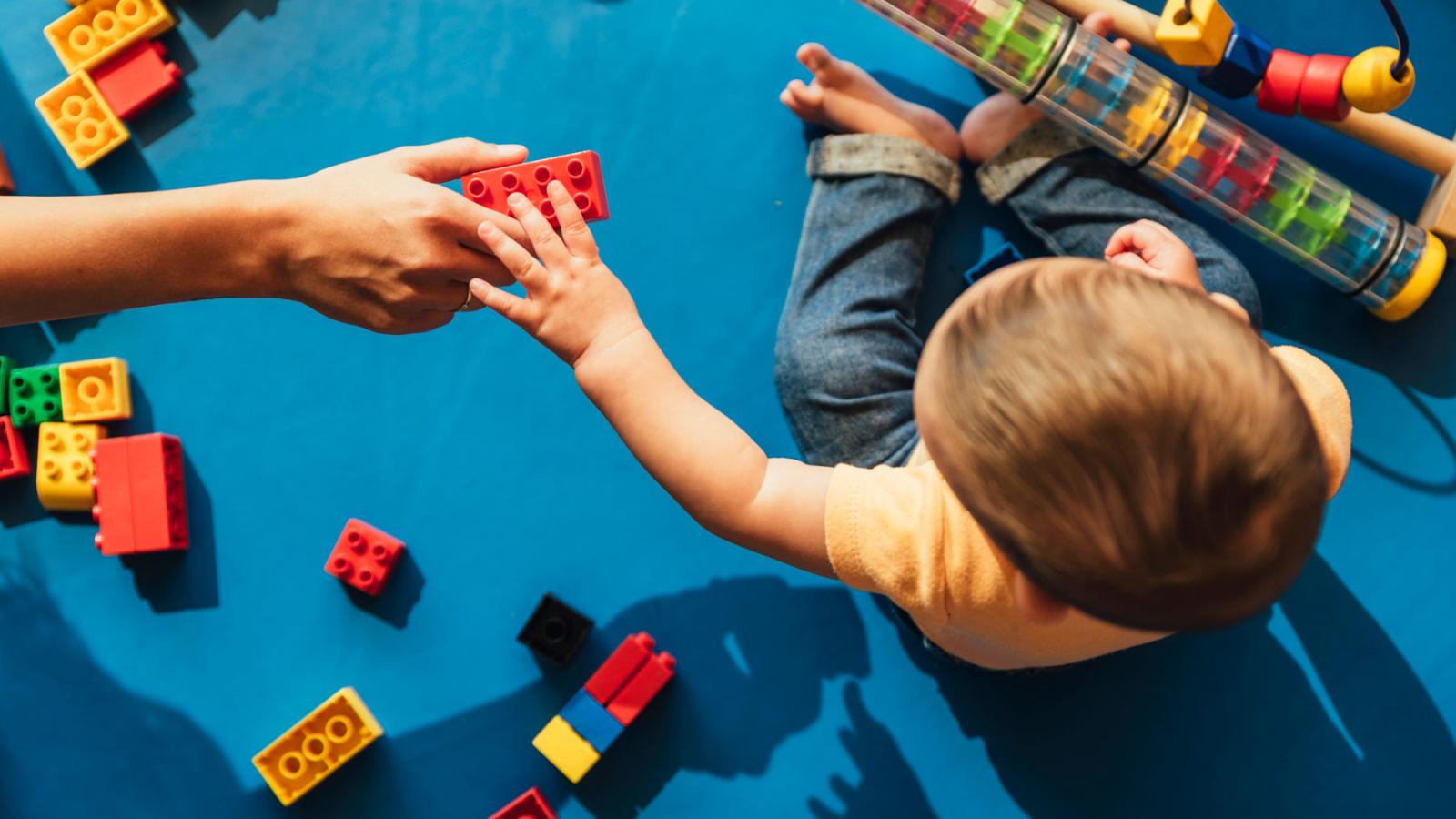Banner

Title
resources
Resource Library
Our Resource Library contains materials and assistance for early childhood educators and those they serve. Explore our selection of podcasts, tip sheets, websites, documents, and self-study courses.
Results: Page 64 of 72
| Resource Name | Description | Resource Type |
|---|---|---|
| The influence of the number of toys in the environment on toddlers’ play | As cognitive, language, and motor skills improve, toddlers are able to engage in more sophisticated play. One cognitive skill that develops during early childhood and greatly influences engagement in age-appropriate tasks is attention. Attention allows an individual to gather information about and sustain engagement with a target. | Document |
| The IRIS Center | The IRIS Center is a national center dedicated to improving education outcomes for all children, especially those with disabilities birth through age twenty-one, through the use of effective evidence-based practices and interventions. Developed in collaboration with nationally recognized researchers and education experts, IRIS resources are designed to address instructional and classroom issues of great importance to today’s educators, issues like response-to-intervention (RTI), classroom behavior management, and early childhood instruction, among many, many more. IRIS resources are used in college instruction, professional development activities, and independent learning opportunities for practicing educators. | Website |
| The Medical Side of Behavioral Concerns | In this episode Pediatrician, Dr. Kris Gendreau joins us to discuss the ways a child’s pediatrician can help decipher behaviors that may challenge. She notes that behaviors can tell us that a child may be uncomfortable in their body, either due to external factors or internal factors and the pediatrician can dig deeper to decern what may be the cause. Listen to learn more! | Podcast |
| The Minnesota Association for the Education of Young Children (MnAEYC) and the Minnesota School-Age Care Alliance (MnSACA) | The Minnesota Association for the Education of Young Children (MnAEYC) and the Minnesota School-Age Care Alliance (MnSACA) are professional associations of more than 700 members each. The members from our organizations are a diverse group of professionals representing early care and education and school age and youth programs across Minnesota. The members are teachers, youth workers, center directors, site coordinators, program managers, trainers, and advocates. MnAEYC-MnSACA promotes quality in early care and education and out-of-school time programs and supports the leadership and development of early care and education and out-of-school time professionals. We forward this mission by focusing on Professional Development, Program Improvement, and Policy & Advocacy. | Website |
| The Minnesota Early Hearing Detection And Intervention | The Minnesota Early Hearing Detection and Intervention (EHDI) program ensures that all newborns are screened for hearing loss. Children need screening for hearing loss beyond the newborn period. Not all newborns receive recommended follow-up and not all hearing loss can be identified at birth. Continued periodic hearing screening programs are critical for identifying a wide range of hearing health needs not found though hospital-based newborn hearing screening programs. | Website |
| The Physical Environment [Bay’adda Caruurta Laguhayyo] | Maqaalkaan wuxuu sharaxaad iyo tusaale kabixinayaa sida bay’adda cunuga lagu hayyo, qorshaha iyo jadwalka waxbarashada iyo caadada meesha kajirta, sida ay saamaynta baaxadda leh ay ugu leedahay sida caruurta ay u dhaqmayso ama dabeecadaha ubadka yaryar. | Podcast |
| The Playground Where Babies Learn to Talk | A campaign to encourage brain development is using parks to deliver its message to children and their caregivers. | Website |
| The Power of Loose Parts Play | Learn about the benefits of Loose Parts Play from this resource created by Nature Play and the Government of South Austrailia. | Document |
| The Power of Touch is Important in the NICU | One in ten infants is born prematurely and spends an extended amount of time in the neonatal intensive care unit, or NICU, after birth. This video, in English and Spanish, highlights research that shows why a small gesture, like touching, can make a big difference and support the development of preemies. | Website |
| The Role Of The Environment On Infant And Toddler Development | Learn how to curate a learning space that encourages the growth and development of infants and toddlers in this online self-study. Examine the foundational principles outlined in the STORY approach to creating a space that meets the needs of the child and the adults who share the space:• Safety and Security• The Environment as “The Third Teacher”• Outdoor Environments• Resources for Learning• You, as an IndividualKnowledge and Competency Framework Area - II.A: Creating Positive Learning Experiences (10 Hours) CDA Content Area - Content Area II: Steps to advance children’s physical and intellectual development (10 Hours)Level 1 - ExploresNew Navigation Tools:This self-study does not have audio available at this time.For optimal performance, please access this course from a computer or tablet.Click on the black box with 2 white arrows to view the self-study in Full-Screen Mode.Click on the black box with white eyeglasses to view the self-study in Accessibility Mode.For ten clock hours on your Learning Record, please register and pay online at Develop. Then, complete a 500 word reflection paper and submit this document with your reflection. Please note: You have access to this document as view only. To enable editing, download the document. Click "file" then "download as" in the upper left-hand corner of this screen. This will give you the option to open the document as a Word doc on your own computer. Then, you can complete the information and email it to: credit@inclusivechildcare.org. *Disregard any directions regarding a final quiz. The only learning assessment needed is the reflection paper. | Course |
Results: Page 64 of 72